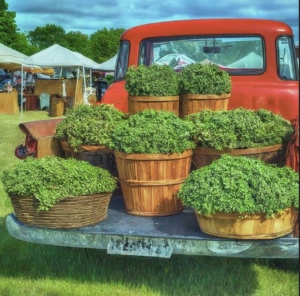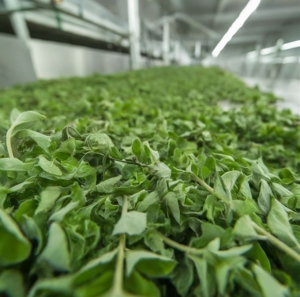Order Our Fresh Oregano
We offer to transform your product lineup with our exceptional oregano herbs that we grow and export in large volumes. Let your customers experience a high standard of freshness and quality in your inventory today!
We proudly supply clients throughout Europe, the Middle East, and Asia among other regions, backed by a robust supply chain that ensures timely and consistent deliveries. Our compliance with stringent international standards, including GlobalGAP, SMETA, and GACC, guarantees that every shipment meets the highest safety and quality benchmarks.
With a weekly capacity of 100kg or monthly supplies of 400kg of oregano herbs, we are ready to support your business growth with flexible solutions tailored to your unique requirements. Our practical 1kg packaging consists of ten 100g bunches, making integration into your product line seamless.
Reach out for a customized quote, and let’s work together to elevate your brand in the fresh oregano marketplace!
Product Description
- Scientific Name: Origanum vulgare
- Family: Lamiaceae
- Height: 20-80 cm
- Leaves: Oval, 4-8 cm long, aromatic
- Nutritional Profile (per 100g):
- Calories: 265
- Protein: 9g
- Carbohydrates: 68g
- Fiber: 42g
- Fat: 4g
- Growing Conditions: Prefers well-drained soil, full sun, moderate watering.
- Harvesting Process: Cut at the base during flowering stage for optimal flavor.
Usage
- Italian and Mediterranean Cuisine: Oregano is a cornerstone of Italian and Mediterranean cuisines, lending its distinct flavor to iconic dishes like pizza, pasta sauces, and Mediterranean salads.
- Seasoning for Meats: Oregano pairs exceptionally well with meats, particularly lamb, beef, and poultry.
- Tomato-Based Dishes: The herb’s affinity for tomatoes makes it a staple in tomato-based sauces, soups, and stews.
- Vegetarian Delights: Oregano is equally versatile in vegetarian dishes, elevating the flavors of roasted vegetables, grilled mushrooms, and legume-based recipes.
- Infused Oils and Vinegars: Oregano-infused oils and vinegar are popular for adding a burst of flavor to salads, dressings, and dipping sauces.
Health Benefits
- Antioxidant Properties: Oregano contains compounds with antioxidant properties, which may help neutralize free radicals in the body and reduce oxidative stress.
- Antibacterial and Antifungal Qualities: The essential oils in oregano exhibit antibacterial and antifungal properties.
- Rich in Nutrients: Oregano is a good source of vitamins and minerals such as vitamin K, manganese, iron, and calcium.
How Long It Takes to Grow
- Seed Germination: Oregano can be grown from seeds, and germination typically takes about 7 to 14 days.
- Transplanting: Oregano seedlings are ready for transplanting when they have developed a few sets of true leaves, usually around 4 to 6 weeks after germination.
- Establishment and Growth: Oregano establishes quickly and starts to grow vigorously after transplanting.
- Maturity and Harvest: Oregano is generally ready for harvest about 8 to 12 weeks after transplanting.
- Perennial Nature: Oregano is a perennial herb, meaning it can survive through winter and regrow in the spring.
Post-Harvest Handling
To maintain the freshness and liveliness of freshly harvested oregano during export, specific conditions are essential. The plants are be kept at low temperatures (ideally between 0-4°C) immediately after harvest to slow down metabolic processes. Additionally, high humidity levels (around 90%) are important to prevent wilting. Utilizing breathable baskets helps maintain airflow, reducing condensation while preventing the growth of mold. Prompt transport to processing facilities is crucial to minimize exposure to heat and ensure that the aromatic compounds remain intact. Each step from harvesting to dispatch should prioritize preserving the quality of the oregano.

Washing
The washing process of freshly harvested oregano is vital for removing dirt and any residual material from the farm. First, the oregano is gently submerged in clean, cold water to loosen any soil particles. This initial rinse helps to prevent damage to the delicate leaves. Following the soak, the oregano is transferred to a specialized washing machine that uses gentle agitation to dislodge any remaining impurities. Afterward, the oregano is rinsed under fresh water to ensure thorough cleanliness. This step not only ensures the safety and hygiene of the product but also helps maintain the vibrant green color and aromatic quality of the leaves.
Chopping/Trimming
Once washed, the oregano undergoes chopping and trimming to prepare it for export. The trimming process involves removing any damaged or discolored leaves and woody stems that do not meet quality standards. Skilled workers utilize sharp knives or mechanical trimmers to cut the oregano to the desired length, ensuring consistency in size for packaging. The chopped pieces are then sorted into different grades based on their appearance and aroma, enhancing the overall quality of the final product. This meticulous preparation ensures that only the best oregano reaches consumers, reflecting the care taken throughout the harvesting and processing stages.
Grading, Sorting, and Bundling
Grading and sorting oregano is essential for ensuring quality and marketability. After trimming, the oregano is categorized based on leaf size, color, and aroma. High-quality leaves are separated from those that do not meet export standards. This process often involves visual inspection and sensory evaluation by trained staff. Once sorted, the oregano is bundled into uniform portions, typically weighing around 100-500 grams each. These bundles are carefully tied or placed in breathable containers to prevent moisture accumulation. By maintaining consistent quality and appearance, the oregano is better positioned for international markets, ensuring customer satisfaction.

Packaging Oregano
Packaging is a crucial final step in the processing of oregano for export. The bundled oregano is placed in breathable packaging materials that allow airflow, reducing moisture buildup and preventing spoilage. Commonly used materials include perforated plastic bags or boxes designed for produce. Each package is labeled with essential information, including origin, grade, and handling instructions. This not only ensures traceability but also informs consumers of the product’s quality. Proper packaging helps preserve the aromatic properties of the oregano while providing protection during transport. The focus is on creating an appealing presentation that attracts customers in the marketplace.
Cold Storage and Dispatch of Oregano
After packaging, oregano is moved to a cold storage facility to maintain its freshness until dispatch. The storage environment is kept at controlled temperatures (0-4°C) and high humidity to prolong shelf life. Regular monitoring of temperature and humidity levels is essential to prevent spoilage. Once orders are received, the oregano is prepared for dispatch, ensuring that the products are shipped promptly to maintain quality. Transportation methods include refrigerated trucks to further ensure that the oregano remains fresh during transit. By adhering to these standards, we deliver high-quality oregano to markets around the world, meeting consumer expectations effectively.

Growing Oregano
- Sun and Well-Drained Soil: Oregano thrives in full sunlight and well-drained soil. It is well-suited for both garden beds and containers.
- Propagation: Oregano can be propagated through seeds, cuttings, or division of established plants.
- Harvesting: Harvest oregano leaves just before the plant flowers for the best flavor.